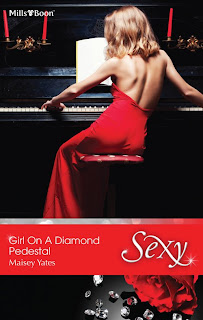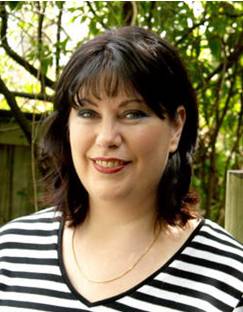Today I have fellow Sassy Sister (yes, they took pity on me and asked me to join a while back) and mega-prolific Mills & Boon Presents author Maisey Yates talking the BIG C!!! CONFLICT! Something I think we NEVER stop learning about. Take it away Maisey...
Thank you for having me, Rach! I really
appreciate you asking me to blog. :)
Sustainable conflict is essential to any story.
If there’s no conflict, there’s very little interest. I’m not talking conflict
in terms of your characters screaming and yelling at each other either. I’m
talking about something deeper.
Most books have two main types of conflict.
There’s external conflict, and there’s internal conflict.
External conflict stems from external forces.
Example: your heroine wants to buy her father’s company, but he’s selling it to
someone else. Internal conflict comes from within a character. You heroine
feels like she’s not good enough, because her father has never seen her value.
One of the best ways I’ve heard it put was that
external conflict forces your characters together (your heroine proposes to
your hero in order to get herself into a position to buy her father’s company)
and the internal conflict keeps them apart. (your hero’s fear of being hurt
prevents him from admitting her loves the heroine)
I’m a big believer in internal conflict in
romance novels. Without it, what you end up with, very often, is conflict that
could have easily been cleared up if the two of them had sat down in a room
together and just engaged in honest conversation.
Real, sustainable, deep conflict isn’t that
simple. In order to solve it, your characters have to change. They have to
reach a crisis point and address a world view they’ve held for years, and make
a conscious decision to think and feel differently.
I did a post a long while back called the onionparfait ,
about how a book is layers upon layers. Layers of conflict, layers of
character.
You have, especially in category romance, the
external right up front. It’s the thing that pushes your characters into close
proximity with each other. And then as the story progresses, that part of the
conflict starts to recede into the background as the deeper conflict and theme
emerges.
Conflict and character go hand in hand. Their
internal conflict will affect how they act, how they relate to other people.
The relationships they’ve had in the past, the relationships they have now. It
will affect how they interact with the hero or heroine. It will affect how the
sex plays out in the loves scenes. Conflict is a part of the character, not
just something you talk about in exposition.
With characters you have layers as well. You
have essence vs identity. Who they are, and who they show the world they are.
Or, in some cases, who they are vs who who they THINK they are. These can be
very contradictory things, and when they are, I think it makes a character more
interesting, more dynamic.
In my most recent MS, A Game of Vows, the
heroine, Hannah, is an extremely competent and gutsy business woman. She’s
probably the most full-on heroine I’ve ever written. She doesn’t just go toe to
toe with the alpha hero, she does her level best to flatten him, particularly
when she begins feeling a connection to him.
That heroine, who was so intense and hard on the
outside, is by far my most broken on the inside. Her image is essential,
projecting strength is essential, because her wounds are so great, and exposing
them would mean dealing with them.
So she has a very clear cut difference between
who she is, and who she pretends to be. Getting to the heart of her conflict is
a stripping away of layers.
Very much like the external/internal conflict
structure in the whole MS, you start with the simple, the obvious, and move
deeper into the truth as the story progresses.
The black moment happens when the conflict comes
to a head. When one character is pushed further than they’re ready to go.
Example: your heroine is asking for love and your hero is not ready to give it.
All along the way the characters have been
changing. They’ve been confronting elements of their conflict. But this is the
big break. This is where everything, all the self protection, has to fall away.
This is the moment where your character has to
decide: what’s scarier? Letting go of everything they’ve put into place to
protect themselves? Or losing the person they love?
That’s how I deal with internal conflict, and
how I use to take my characters on a journey, and hopefully take the reader on
one as well!
If you have any questions about character or
conflict or...anything...please ask in the comments!
Thanks Maisey! And yes, please DO ask questions!! Maisey is one wise and VERY knowledgeable lady :)
Blurbs for Maisey's recent books:
The first time Maddy Forrester heard her boss’s mesmerizing voice barking orders down the phone, she knew he was a force to be reckoned with. But nothing prepared her for the sight of Aleksei Petrov. He is the last thing Maddy needs, but the first thing she wants!
Aleksei is determined not to mix business with pleasure, but he struggles with the irresistible sparks his feisty secretary ignites in him- she’s a problem he does not want.
The proposed solution? One unforgettable night to fulfill their every wicked desire.
Never been kissed.
Noelle was once the girl who had everything. Until the piano prodigy fell from grace. Destitute and desperate, she’s forced to accept billionaire Ethan Grey’s convenient proposal.
Ethan wants revenge – all he needs is Noelle’s signature on the marriage certificate. Yet his carefully composed façade cracks in the face of her innocent attempts at seduction.
Noelle’s only ever felt love and excitement whilst at her beloved piano – yet now her traitorous body craves the white-hot passion ignited by Ethan’s skilled touch. But will he ever see her as more than a means to an end?








.JPG)
.JPG)
.JPG)

.jpg)








